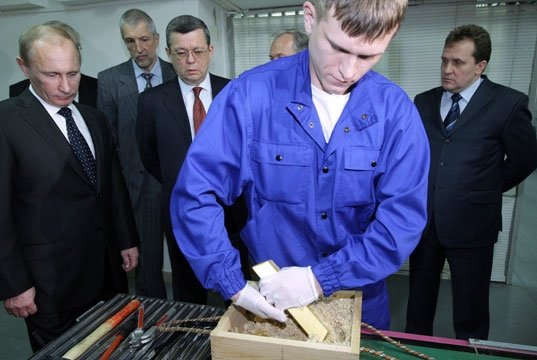Central banks of emerging economies stocking up on gold
Last year was certainly favourable for gold sales: almost all emerging market economies increased the share of the yellow metal in their national reserves. Russia bought the greatest amount on record in 2018 as part of its ''de-dollarisation'' strategy.
Central banks all over the world keep buying gold, as they recognise it as an effective diversifier and store of value, says Forbes. According to the World Gold Council, banks added 651,5 tonnes of gold worth about $27,7 billion to their holdings in 2018, showing remarkable growth of 74% compared to the previous year. It has been the largest amount since 1971. Moreover, in the fourth quarter of 2018, central banks purchased 195 tonnes, which was the most for any quarter on record, reports GFMS research and consultancy.
Trying to diversify their reserves away from the US dollar, central banks have been net buyers of gold since 2010. Last year, demand came mostly from emerging markets, as most Western nations already have a comfortable share of gold in their total reserves. Russia, Turkey and Kazakhstan were among the biggest buyers, while a number of countries including Hungary, Poland and India have acquired gold for the first time this century. China has also added to its gold holdings for the first time since 2016.
In the United States, gold totals 74% of the country's reserves. Russia has 2,066 tonnes of the yellow metal, which is the fifth most in the world, but this amount represents less than 18% of its total reserves. China's holdings of 1,842 tonnes represent only 2,3% of reserves. Historically, the US Federal Reserve had the largest share of gold in its total reserves among the world's central banks, but Venezuela has lately surpassed the US, bringing the share to 76% in order to deal with hyperinflation and the rapidly deteriorating national economy. Since the US and other countries have imposed heavy sanctions on Venezuela, it has had to rely on its gold holdings to make international bond payments.

For Russia, 2018 became the fourth consecutive year of purchases above 200 tonnes. Moscow bought 274,3 tonnes of gold, the greatest amount on record, in 2018, implementing its ''de-dollarisation'' strategy. According to Forbes' contributor Frank Holmes, the country got rid of its almost entire position in US Treasury bonds to fund its rotation into gold.
The trends showed by central banks of emerging economies indicate that something big is happening in the global gold market right now, believes the author. He points out that the yellow metal ended at a nine-month high last month and assumes that gold prices can surge even higher this year given that the US dollar is expected to lose momentum on higher deficit spending.